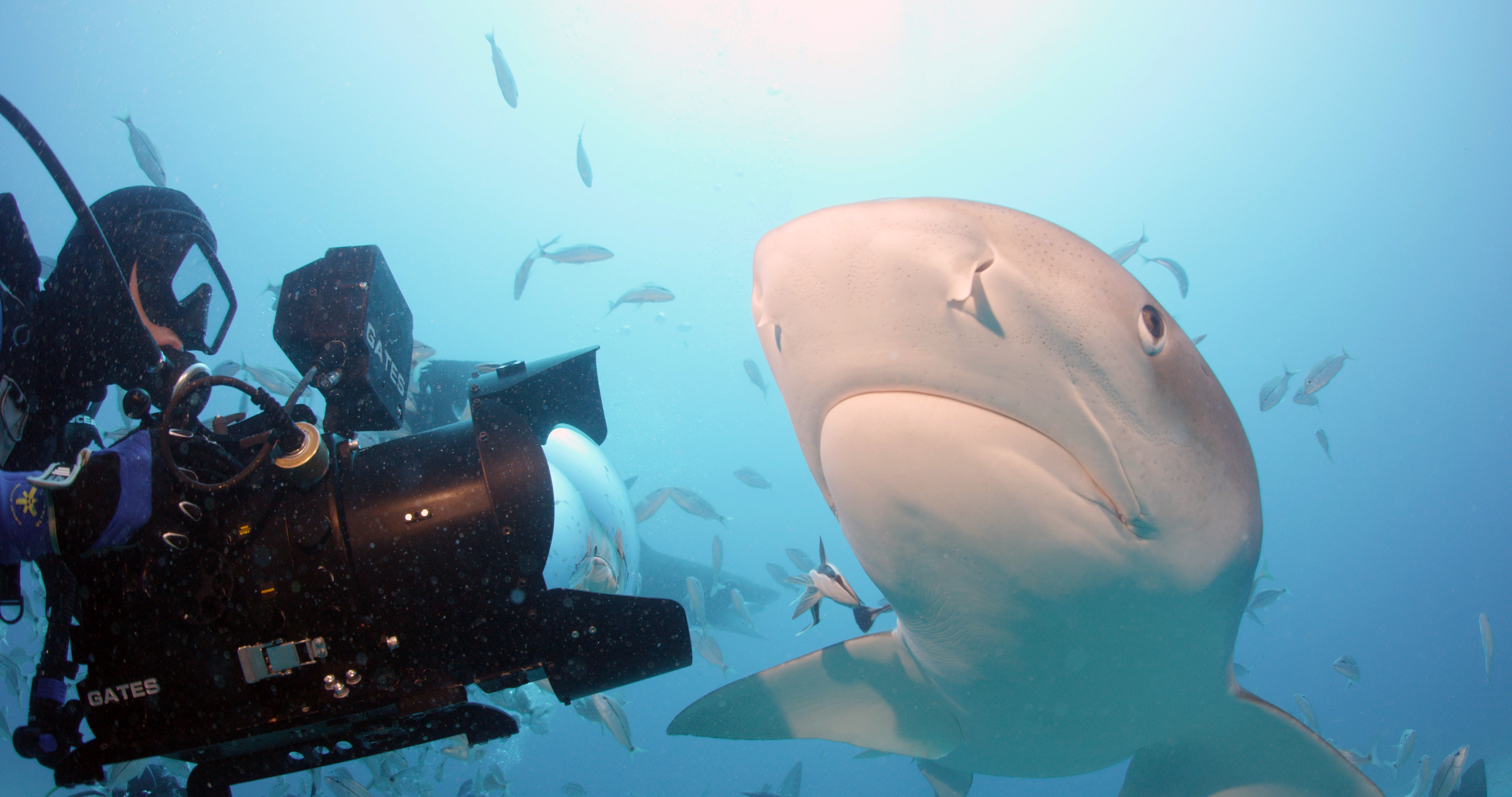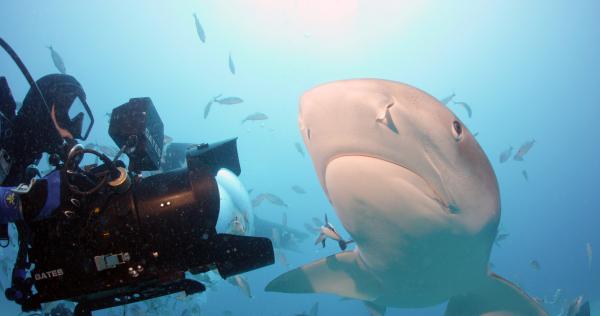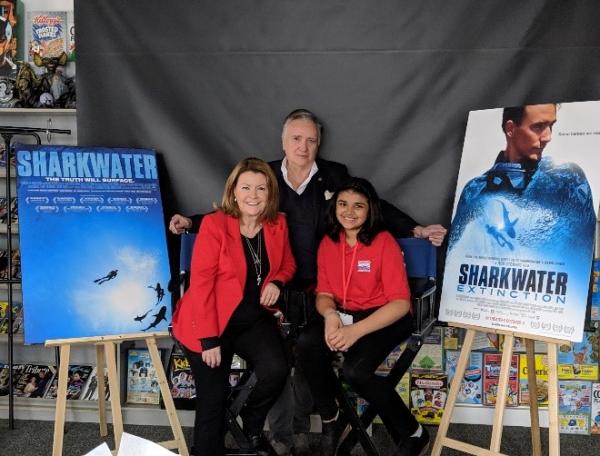KID REPORTERS’ NOTEBOOK
Sharkwater Extinction


This photo was taken during the filming of Sharkwater Extinction, a new documentary by Rob Stewart.
As a child, Rob Stewart loved the natural world. “He loved everything in the ocean, but sharks the most,” said his mother, Sandy Stewart, during a recent interview in Toronto, Canada. “He said that they were like the last dinosaurs.”
Stewart spent his life studying and photographing sharks and other marine life, and creating documentaries. Tragically, he died in 2017 at the age of 37 in a scuba diving accident. The accident occurred while Stewart was filming Sharkwater Extinction, which members of his crew completed in his honor.
The documentary premiered at the Toronto Film Festival in September of 2018 to great acclaim. It is now available on DVD and Amazon Prime and can be seen in select theaters.

Canadian photographer, filmmaker, and conservationist Rob Stewart died in a scuba diving accident while filming Sharkwater Extinction.
STOPPING ILLEGAL SHARK FINNING
Like dinosaurs, sharks may soon be extinct. As of now, 25% of shark species are endangered.
Stewart sought to raise awareness about sharks and their key role in the ecosystem. The big fish are an important indicator of an ocean’s health. As the documentay points out, they maintain the balance in the ocean, which regulates the planet’s oxygen.
Stewart believed that sharks should be protected against humans and other predators. He investigated how illegal shark finning has led to a drastic decrease in the shark population. Shark finning is the act of cutting off a shark’s fins while the animal is still conscious. Once the fins are cut off, the shark is thrown back into the water to be eaten alive by other fish.
Financial gain is the main reason that people fin sharks. One pound of dried shark fin can retail for $300 or more, and the worldwide practice yields billions of dollars.

Rob Stewart swims with a shark.
“NATURE WILL FIX ITSELF”
When Stewart found out about the finning, he sought to end it. As an experienced diver and skilled cinematographer, he was able to raise awareness of the problem by filming sharks in their natural environment. His films, said Sandy Stewart, showed people “how beautiful the underwater creatures are. Viewers would fall in love with them and work to protect them.”
The filmmaker exposed illegal activities in West Africa, Spain, Costa Rica and other places around the world. Although some countries tried to prevent him from returning, Stewart did not stop investigating. His father, Brian Stewart, said that “he was just driven to go back to see if they had done anything about the illegal [practices]. I think he felt it was his duty to go back and expose them.”
As of 2013, 55 countries had banned shark finning. Stewart lived and died a hero in the pursuit of saving sharks and the marine ecosystem. He is credited with saving one-third of the world’s sharks.
“Nature will fix itself if you just leave it alone,” said Sandy Stewart.

Stewart’s parents, Sandy and Brian, became producers of Sharkwater Extinction after Rob’s death. They are shown here with Nikita in Toronto, Canada.
WHAT YOU CAN DO
Stewart’s parents hope that his love and compassion for sharks will inspire kids to continue his legacy by supporting shark-friendly initiatives. They encourage kids to buy or ask their parents to buy shark-free products.
It is also important, the Stewarts say, to be aware that many pet foods, lotions, cosmetics, and other products contain shark which is mislabeled as “oceanic white fish.” Kids can ask tougher questions about the ingredients of the products they buy and get their parents to do the same.
Another thing that young people can do is learn more about sharks. A good place to start is “Shark Database,” an online resource that was created by Rob Stewart’s friends.
“It’s your generation that we want to make sure sees the world that Rob saw,” said Brian Stewart. “One person can make a big difference.”
